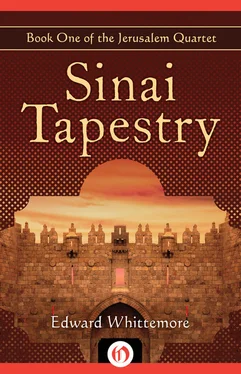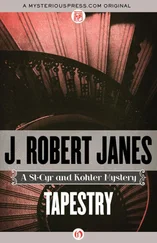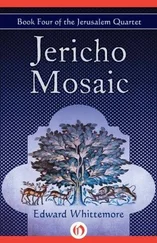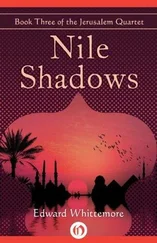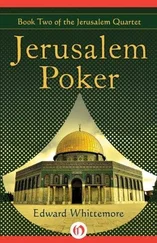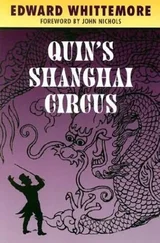But before we come to this final novel of the Quartet, and to a depiction of events that have taken place in the Middle East within living memory, Whittemore takes us back, through time, to the very beginnings of recorded history, and he does so, especially in this first novel, Sinai Tapestry, in ways that will remind readers more of Borges and Marquez than of Le Carré or Greene; and in ways that remain uniquely Whittemore.
In Sinai Tapestry, characters move from place to place; and through time itself — and history — in improbable and implausible ways; they are conceived, and rendered for us, as larger than life, often literally so. Consider two of Whittemore’s creations, Plantagent Strongbow and Haj Harun.
Plantagent Strongbow, whom we meet on page one, is twenty-ninth Duke of Dorset, a great swordsman, botanist, and explorer; he disappears in the Sinai in 1840, and reappears forty years later as an Arab holy man who has written a thirty-three volume study of Levantine sex, and who becomes the secret owner of the Ottoman Empire; and he is seven-feet-seven-inches tall. And Haj Harun, a former antiquities dealer and stone carver of winged lions during the Assyrian occupation of the Holy Land, a proprietor of an all-night grocery store under the Greeks, a waiter under the Romans, a distributor of hashish and goats under the Turks, is a man who has been able to do all these things and to live in all these places because he is at least three thousand years old.
“When I want to daydream,” he says to Strongbow, “I gaze at one of my antiquities and pretty soon I’m slipping back in time and seeing Romans and Babylonians in the streets of Jerusalem.”
What is remarkable about Sinai Tapestry is that its flights of invention, as in these instances, are set forth in ways that are as playful and ordinary as they are mysterious and magical. It is as if the multitude of stories — many reflecting actual events of history, others seeming to be tall tales — are, effectively, trying to persuade us of what, in the Middle East, often seems true: that the entire history of the region, and of those who have peopled it — Christians, Jews, and Muslims — can be present in any one moment, and in any one place, and — as in Haj Harun’s shop — in any one object. What Whittemore does to create this sense of timelessness is to keep his eye constantly on the relation between the large movements of history and their most ordinary, palpable human sources. He never loses sight, that is, of the ways the most sublime or savage moments, in war and in peace, arise from and impinge upon individual human beings: their sufferings, hopes, desires, joys, confusions, and losses.
Thus, the following descriptions, a few pages apart, of moments that occur shortly before, and that look forward to, World War Two:
Haj Harun’s crumpled figure was all but lifeless. He lay on the stony ground gasping painfully for breath, his face smeared with blood. Blood and rust filled his eyes. The circle of blood below his waist was spreading. The broken leg was bent awkwardly to one side.
An ugly world and she was frightened. People left you, why? what had you done? Everyone always went away and there was no one to trust, so she dreamed. At home alone she took off her clothes and danced in front of a mirror, dreaming, because dreams alone were safe and beautiful.
And this, of the massacre in Smyrna, in the year 1922:
Turks worked the peripheries robbing and killing and taking girls. Horses’ halters catching fire, the beasts charging through the crowds trampling bodies. The crowds so dense in places the dead remained standing, held up by the living.
If, at first, coming upon such passages, we find ourselves making comparisons, as critics have done, to the fiction of Barth, Borges, Marquez, Nabokov, or Pynchon, the more accurate comparison would seem to be to that very book that is central to Sinai Tapestry. For in its use of folk tales, its erratic mixture of fact and legend, its truncating of time, its insistence on the validity of miracles, its chronicling of conquests and wars, its listings of lineages, its depictions of barbarism and heroism, and — above all — its tracing, through individual lives and family sagas, of the small and large moments and movements of history, Sinai Tapestry is the most Biblical of books.
In its setting, in its style and its subject, in its swift movements through time, and in its vision of all that is depraved and redemptive about humankind, Sinai Tapestry thus recalls the very book whose reality it calls into question. Early in the novel, Strongbow, who has made his way, by foot, from Constantinople to the Holy Land, asks others the question he had been asking himself: “Have you heard of a mysterious lost book in which all things are written? A book that is circular and unchronicled and calmly contradictory, suggesting infinity?”
And later in the book, Strongbow’s son Stern, thinking of his father and his grandfather — Englishman, Arab, Jew — has this epiphany, not unlike those of the patriarchs of the Old Testament:
The vision burst upon him. A homeland for all the peoples of his heritage. One nation embracing Arabs and Christians and Jews. A new world and the Fertile Crescent of antiquity reborn in the new century, one great nation stretching majestically from the Nile through Arabia and Palestine and Syria to the foothills of Anatolia, watered by the Jordan and the Tigris and the Euphrates as well, by Galilee, a vast nation honoring all of its three and twelve and forty thousand prophets, a splendid nation where the legendary cities would be raised to flourish once more, Memphis of Menés and Ecbatana of Media and Sidon and Alep of — the Hittites, Kish and Lagash of Sumer and Zoar of the Edomites, Akkad of Sargon and Tyre of the purple dye and Acre of the Crudaders, Petra of the Nabataeans and Ctesiphon of the Sassanids and Basra of the Abbasids, sublime Jerusalem and the equally sublime Baghdad of the Thousand and One Nights.
In the early winter of the year 2000, at the age of 61, I visited Israel for the first time in my life. On my last evening there, in Jerusalem, a short while after the Sabbath had ended, my cousin Jerrold, who had settled in Israel 37 years before (both of us are blessed with the Hebrew name of Yakov, in memory of our paternal grandfather), arrived at my hotel to bid me farewell. Embracing me, he asked that I not wait until another 61 years had passed before I visited Jerusalem again.
But I recall thinking, at the time, that were I living in the Jerusalem of Edward Whittemore, I could return as easily in 61 years as I could in 61 days. (Near the end of the novel, musing on his father’s life, Stern thinks: “What he did is too unreal not to be true. No one could forge a life like his.”) And whenever and however I might return — in fact, or in fancy, or in memory — I would find that my sense of the city would be enhanced by having read the four books that comprise Whittemore’s Jerusalem Quartet.
The Quartet is, in sum, larger than any of its individual parts — an imaginative construct that allows us to wander through time, place, and history with a knowledgeable and crafty guide, and thereby to allow memory and imagination to inspire us, the novels suggest, as they have inspired others before us, and have, thereby, brought into being everything that would seem to radiate from the very stones of this holiest of cities — this place where heaven and earth are said to meet — not least of which is the power of imagination and desire, when allied with memory, to shape history itself.
Jay Neugeboren
New York City, 2002
Jay Neugeboren is the author of 13 books, including the prize-winning novels, The Stolen Jew and Before My Life Began, and two award-winning books of non-fiction, Imagining Robert and Transforming Madness. He is lives in New York City.
Читать дальше
